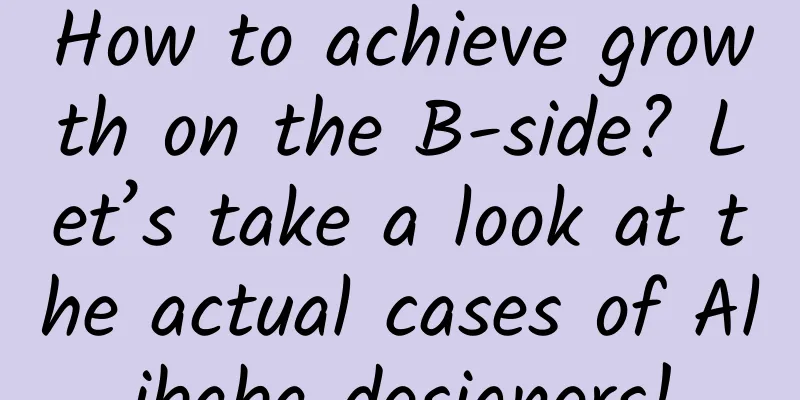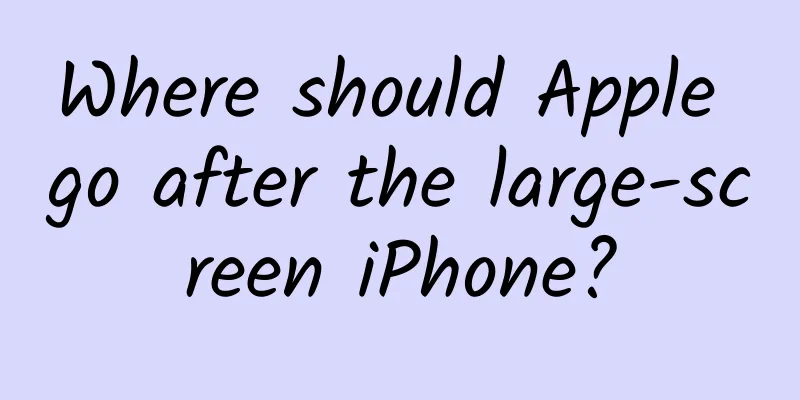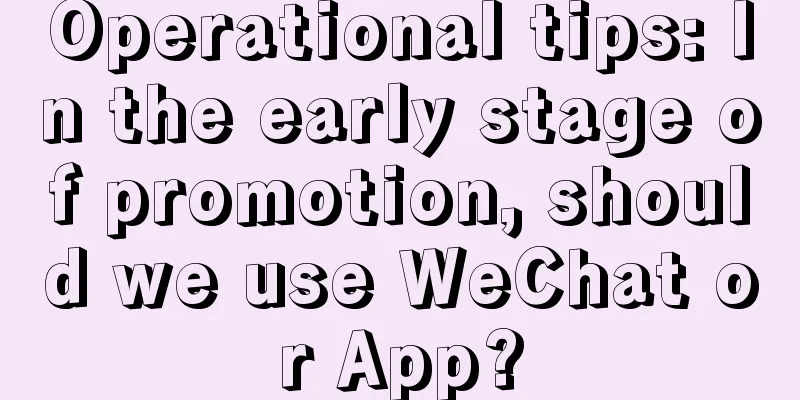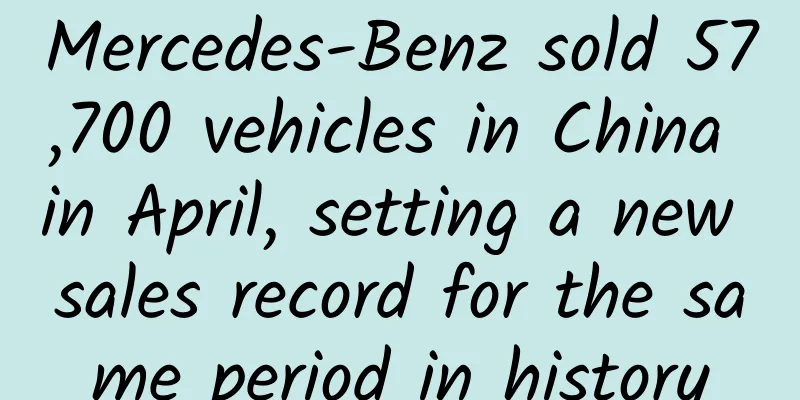How to achieve growth on the B-side? Let’s take a look at the actual cases of Alibaba designers!

|
Growth design is a hot topic nowadays. More and more companies are beginning to pay attention to growth design and set up independent growth departments. In the Ant Experience Technology Department, in addition to doing a good job in experience design, we are also exploring the direction of growth. Under the guidance of existing growth theories, we combine our own business, implement practices, and summarize. The following are some of our little experiences. This article will describe how we use the growth chart to sort out each link of the product, and how to use quantitative user behavior data funnels and qualitative pain point proportion data for comprehensive analysis to find opportunities. It will be supplemented with growth practice cases in Kitchen and Yuque. In terms of growth, we are still in the initial exploration stage. If there are any immature aspects, you are welcome to discuss them together. Why focus on growth?Speaking of growth, the past 10 years have been a period of rapid growth for China's Internet, but in the past 2-3 years, with the decline of population, traffic, and capital dividends, more and more companies have begun to focus on growth. A typical example is that in 2017 Coca-Cola announced the cancellation of CMO (Chief Marketing Officer) and replaced it with CGO (Chief Growth Officer), and then various growth positions emerged one after another. What is Growth?Growth is based on users. Users generate demand, which in turn generates products. Only then can there be growth on top of products. So we understand that products create value, and growth is actually about delivering value and making value discoverable. Only by allowing more users to experience the core value of the product to the maximum extent can we expand rapidly and realize it effectively. It has several characteristics:
What products are suitable for growth?So what kind of products are suitable for growth? Are the To B products we make suitable for growth? First, let's look at the difference between To B and To C: For To B products, most decisions are made by groups, and the decision chain is complex. The buyers are not necessarily the users. If the average order value is high, the purchase is basically driven by the sales relationship. However, for products with C attributes, because it is a personal consumption scenario, a single decision is made to buy, just like everyone buys things on Taobao, at will. Then using growth strategies to promote conversion can save a lot of customer acquisition costs, which shows that growth is more suitable for products with C attributes. But after more than half a year of practice and communication with other growth teams, we found that although To B growth is difficult, there are great opportunities for growth in SMB (small and medium-sized enterprises). SMBs may be small teams of 2-3 people. The customers and users of such enterprises are usually the same type of people. We understand that this also has To C attributes. In addition, there are many small and medium-sized enterprises, and the experimental data is also guaranteed. To sum up in one sentence: Products targeting SMB small and medium-sized enterprise customers can achieve growth. So how do we do it specifically? Based on our own experience, we would like to share with you a big picture of growth and two practical cases. Growth chartThe growth chart is based on the AARRR model and evolved from the user journey map. Why not use the user journey map instead of the growth chart? The user journey map mainly reflects the severity of the problem through the emotional curve, but there are also problems in its use that are difficult to quantify. Therefore, in the growth chart, we choose quantitative user behavior data funnel to replace the sentiment value. The funnel is actually an analysis of a process and path, the purpose is to locate the key to the problem, so that the right remedy can be prescribed. But quantitative data usually only tells us what it is, while qualitative data can tell us why? Therefore, we also recommend combing the qualitative data from user surveys, categorizing them by process, stage, product module, problem type, etc., and using the pain point weight formula to calculate the percentage of pain points in each dimension, so as to conduct a comprehensive analysis and find opportunities. In addition, the growth map can also record the process of breaking down growth goals from overall business goals, as well as the strategies, plans, and indicator results of the experiment, so the growth map is also a "living document" that connects strategy and execution and is constantly updated. Formula: Pain point proportion = [number of problems at each stage / total number of problems] X100% So how to use it? When you are sure that a project can achieve growth, the most important thing is to invite key persons in different roles, including PD, technology, and operations, to jointly build a growth picture. Break down the growth goals based on the overall business goals, then organize the quantitative and qualitative data into a big picture, find opportunities, and then determine the focus areas to start growth experiments. Think of it like when everyone is eating a buffet, basically they first look at what is available, then screen, take a small amount of food to try, and finally decide on a few delicious ones to focus on. Trying to take a small portion of food is equivalent to the process of growth experimentation. It is divided into 4 steps: The process of analyzing insights from quantitative and qualitative data - continually formulating hypotheses - then prioritizing, conducting experiments - and validating applications. CaseNext, I will share two small cases we did during growth. Case 1: 6 weeks of Ant Design design tool Kitchen growth practice for 1 yuanKitchen is a Sketch toolkit that helps designers improve their work efficiency. Let's first use the growth chart to look at the current status of Kitchen. We have extracted the data funnel of users from visit - download - install - use, and we can see that the overall funnel is still very good, with an overall retention rate of 40%. Then my boss said, "You can go and attract new customers. I'll give you one dollar and let you move the earth." Actually, I wanted to roll my eyes at him at that time. What can one dollar do now? But think about it the other way around. This is indeed a very important point about growth: how to use the smallest cost to leverage the greatest value and find the biggest point of force. Based on the current DAU data and after preliminary discussions, we set a goal of doubling DAU growth in 6 weeks. Around this goal, we further decomposed it into new additions and retention. As mentioned earlier, the retention rate is good, so our growth in these 6 weeks is focused on attracting new users. The most important thing to attract new users is to find low-cost channel operations. Then, we brainstormed some websites that designers usually go to and that we can cut into. Although we screened some, there are still many, and we can't go to all of them. With limited people, limited money, and limited time, we return to our goal and need to find the most suitable and low-cost channel to operate. Therefore, based on the ICE scoring system and combined with the business, we made some partial adjustments, and finally scored the channels based on three dimensions: "influence", "conversion rate" and "feasibility". We determined the top four star-marked channels for experiments. Here I will mainly share a small experiment conducted on the Ant Design channel. Before the growth, we had already placed ads on the Ant Design homepage, and found through data that the conversion rate was less than 0.2%. Later, we analyzed the data on each page of Ant Design and found an interesting phenomenon: there were more users coming from the recruitment posts than from the homepage. Comparing these two entrances, one is the homepage and the other is a text link on a very inner page. The more remote entrance has an insignificant location, but it brings 10 times more users to Kitchen than the homepage. We also compared the differences between them: Although the homepage is a relatively large position with a large number of views, users generally browse roughly and have little desire to read. Clicking on the recruitment page usually comes with a purpose, so this part of users has a high desire to click. As the saying goes, desire-friction = conversion. In order to improve conversion, either increase the customer's desire (Desire) or reduce friction (Friction). It is often easier to eliminate friction than to increase customer desire. So when users have the desire to come, we try to reduce friction as much as possible, which can bring greater conversion. So we put forward a bold hypothesis: if we add guidance to pages that users have a stronger desire to click, have higher attention, have higher page views, and are related to the Kitchen function, the effect of this diversion may be better. So we started our experiment, first analyzing the top 20 pages with the highest page views of Ant Design, and filtering out pages related to the Kitchen function. Under the relevant function page, add a module called Designer Exclusive. Under the pages of different functions, add different guide copy to attract designers to click. For example, for the Table component, we added the guide copy: Install the Kitchen Sketch plug-in, and you can automatically generate the Ant Design table component in two steps. (We even tried to add emoji before the copy, add or not add emoji after the copy) Half of Ant Design's users are designers. So when designers enter the page and also want to use the Table component, it can reduce user friction and increase conversion. One month later, we found that compared with the home page, the traffic on the function page was better, which also showed that this experiment was successful. The number of visits through the Ant Design channel increased by 2460% overall. And this impact is long-lasting. At the same time, after the success of the experiment, we continued to try different growth experiments in different channels. After 6 weeks, the overall DAU increased by 42%. Although the 6-week goal was not achieved 100%, the most important thing is the process of continuous experimentation. Case 2: Yuque user growth practiceYuque is a knowledge collaboration product incubated by Ant Financial. Within Ant and Alibaba, everyone uses Yuque to manage their office documents and personal notes. It is a note and document knowledge base used by 100,000 Alibaba employees. Of course, Yuque is not only used within Alibaba, but also serves external companies and individual users. Therefore, those who have not used it are welcome to try it. As a document management tool, "writing" is a key link. Therefore, Youque uses "writing a document after registration" as the user activation action. The goal of this growth practice is to increase the activation rate of new users. We can also use the growth chart to sort out the process of new user registration and activation. From the data funnel, we can see that the conversion rate from registration and login to activation is very low. This is an opportunity for us. We also conducted a round of user research. According to the results, many users do not know what Yuque can do or how it can solve their problems after registering. This is reflected in the user's operation and confusion: first, the guidance is too weak and they don't know how to start writing a document; second, the abstract concepts are confusing; third, the entire activation process is lengthy and easy to lose patience. There is actually a lot of room for improvement here. Can we improve the conversion rate through some experiments? First, analyze the problems of the original solution: This is our old boot plan. After the user completes the registration, he will enter his personal page by default. Yuque will create an empty default knowledge base for the user by default. Looking back at this page now, it’s no wonder that users say they don’t know what Yuque can be used for. First, the scenario guidance is weak. Every day, different users come to Yuque with their own scenarios and problems. Some want to collaborate on office documents, some want to take notes on reading, and some want to write columns and blogs. Faced with such a variety of needs, Yuque only provides an empty "default knowledge base", and the rest is left for users to explore on their own. No wonder users feel at a loss as to where to start. In addition, concepts like "knowledge base" are actually very abstract and difficult to understand for novices. In addition, there are also distracting information such as "followed" and "followers" on this page that are not very relevant to the creation. These things will hinder user activation and need to be optimized. In response to the above problems, the team members discussed and proposed a hypothesis: Can we improve the overall activation rate through scenario-based guidance? The so-called scenario-based guidance is to extract the most typical scenario templates and package them into model rooms through the product positioning of Yuque and the actual usage of users. Users come to Yuque with scenarios and problems, and Yuque greets users with corresponding solutions. In this way, the needs and solutions can be well matched, and the question of "what can Yuque be used for" is naturally solved. At the same time, the new solution packages difficult-to-understand concepts such as "knowledge base" through scenario-based packaging, turning them into more concrete things such as "notebooks" and "guide books". Users no longer need to learn these concepts right away, but only need to slowly experience their roles during use. The above are the six scenarios we initially refined, and we placed them on the first page that new users enter after registering. Here we take learning notes as an example: after a new user completes registration, if he wants to use Yuque to take learning notes, he can click "Create Now" below the notes. At this point, the learning note creation process will begin. Yuque will fill in the form content for the user by default and display a sample in the purple box on the right. Through the sample, the user can roughly understand how Yuque solves the problem in his scenario. Next, the user only needs to click New to create a knowledge base suitable for taking learning notes. Look, a learning note knowledge base has been created. Here, users can choose to "create a new document" by themselves, or start their own creation based on the template document we prepared for them. The entire guidance process always revolves around the user's goals and scenarios, and the results are placed in front for users to preview, so that they can feel more tangible. In the end, our growth experiment achieved good results. Compared with the old version, the user activation rate of the new version increased by 52%. Since the experimental results are good, can we go a step further and amplify the impact of success? Here are two small methods: learning from one example and following up on the success:
Let’s go back to the example above. After verifying the effectiveness of scenario-based guidance, we also use the templates in the user’s daily new creation process. In addition to the novice guidance, users can also use the scenario templates we summarized to create a new knowledge base or team in their regular new creation process, so as to learn from one example and apply it to other situations. This design is conducive to introducing the usage of Yuque to existing old users, and also makes it easier for them to explore more possibilities of Yuque. In addition to figuring out "how does Yuque solve my problem", they can also find out "it turns out that Yuque can also do this!" At the same time, based on the original six templates, we took advantage of the momentum of Double 11 and Double 12 to refine the "e-commerce team" template and build on our success. E-commerce team template We hope to convert some of the merchant traffic and allow merchants to manage their own inventory and sales in Youque. After a round of learning from past experiences and taking advantage of the success, the scenario-based growth experiment has achieved good results. In addition to the 52% increase in the overall activation rate mentioned above, since the launch of Yuque scenario-based templates, 57% of all new teams created by Yuque have been created through templates; 21% of all new knowledge bases have been created through templates. It can be said that our scenario-based templates are more in line with the actual scenarios of users and are accepted by users. The growth experiment has achieved good results. Throughout the entire process, there has not been much incremental change in product functionality. What Yuque could do before, it can still do now; and what Yuque could not do before, it can hardly do now either. Through scenario-based approaches, the value of the product can be made explicit, and by allowing users to discover the explicit product value, user growth can be promoted. Scenario-based approach allows value to be discovered. This is a small lesson we have learned from Yuque’s growth practices and would like to share it with everyone. ConclusionFinally, let’s summarize the key points: Use the growth chart, quantitative user behavior data funnel and qualitative pain point ratio data to conduct comprehensive analysis and find opportunities. Then, based on the overall business goal, break down the growth goal layer by layer and determine the focus area of the growth experiment. What should be done first and what should be done later? Use the minimum cost to leverage the greatest value. However, the growth chart is only a tool and means. The most important thing is to create focus and promote together with the key person, so as to achieve twice the result with half the effort. Growth practice is not smooth sailing and can be achieved overnight. The most important thing is to persevere and iterate the experiment process. If the experiment is successful, you can continue to amplify the impact of the success by following up on the success and drawing inferences from it. If the experiment fails, you need to learn lessons, understand the reasons, and move on to the next experiment. Finally, I want to say that growth is just a way of thinking. Grow through design, let the core value of the product be discovered and used by more people, and ultimately help business growth through design, and even have an impact on the business. |
Recommend
The ninth episode of the Aiti Tribe Clinic: Java, Python, PHP, they all say they are simple
【51CTO.com original article】 Activity description...
Does a mini program mall need to apply for a business license?
Can an e-commerce business license be used to ope...
How to write a crisis public relations plan?
Introduction: Behind every event, there is a trut...
Revelation on user growth in 2020!
At a time when traffic is becoming increasingly s...
Why was the earthquake in Hualien, Taiwan Province felt strongly in Jiangsu, Zhejiang and Shanghai?
According to the official measurement of the Chin...
How to design a popular H5? 5 tips to make you a master!
It’s time to learn more. A few days ago, an H5 ad...
What time can I visit the examination room for the college entrance examination? 2020 college entrance examination Anhui examination room opening hours and examination center arrangements
What time can I visit the examination room for th...
How much does it cost to open an account just for Baidu Union promotion?
(1). Baidu Union Promotion is a single account wi...
Nubia Z9 series new products are really good
The launch of the Nubia Z9 series, a powerful Sna...
The “runner-up” is also domineering! Why is it called “bank” instead of “gold shop”?
1. Live under the aura of "gold" As we ...
Samsung Mobile Business President: To regain China's top customers are operators
According to the technology website ZDNet, after ...
You read that right! Google and Facebook are competing fiercely for the Chinese market
[[122333]] In 2014, Google and Facebook, two glob...
How to plan a promotional event to increase followers?
For new media operations, event planning ability ...
88% of Apple users have disabled app tracking. What are the considerations for the remaining 12%?
The issue of APP obtaining user privacy has inten...









